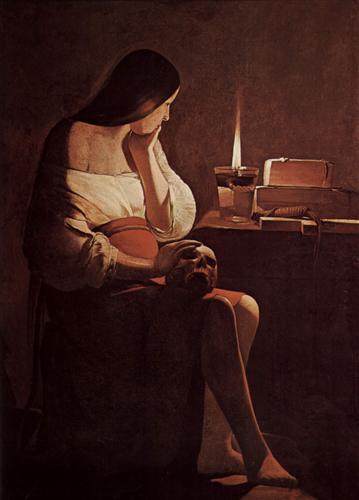The History of Art teaches us many useful things about technique. Students in drawing and painting have been studying how chiaroscuro has played its part in the development of the tradition of Western painting by putting it to use in their studio work.
Chiaroscuro comes from the Italian and translates literally as, light/dark. In painting, it is the technique that allows an artist to describe form by graduations of light and dark and is generally accepted as being developed through the works of Leonardo de Vinci and his contemporaries during the Renaissance.
Chiaroscuro not only reveals form on a flat surface – the illusion of 3 dimensions - but also introduces an expressive element into the subject matter. When a single light source is used in a painting, for example a candle, or lamp, it creates strong contrast, with deep shadows and pools of light. These in turn add a sense of theatre, with the spectator drawn further into the work
Interesting fact: a grid used in this way dates from before the Renaissance. For most artists, including Leonardo De Vinci, a grid, along with a camera obscura, were everyday pieces of equipment in the artist’s copying “toolkit”.
During the C17th, Caravaggio, in Italy, Georges de la Tour, in Lorraine and Garrit van Honthurst, in Holland fully exploited this technique in their painting and through it, the subjects that inhabited them, was brought to life. Many of Caravaggio’s early biblical scenes actually caused a public outcry at the time because of their realistic and dramatic nature.
Students were asked to make larger than life self-portrait using white chalk on black Ingres paper. They had access to a single light source in a darkened space, a camera, and used a grid to enlarge and realise their final artwork.
(Click on the artwork below for information on each student artist.)






